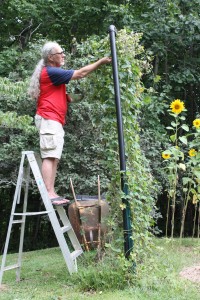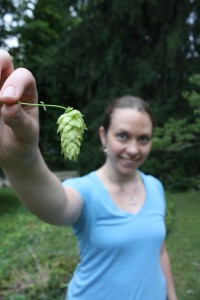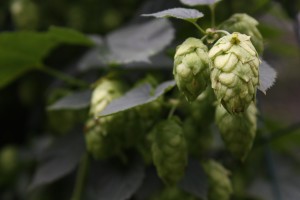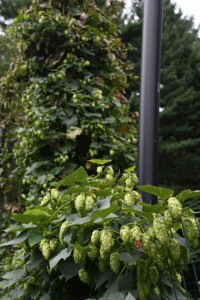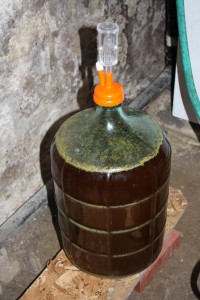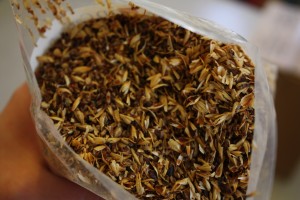“Dad, that ladder is in miserable condition! You can’t stand on that; it won’t work!”
“It should work.” My father said, nonchalantly twisting one broken leg out from behind another. There is no convincing this man of safety sometimes, so I kept my distance and stayed on the same side of the hops arbor as him in case that ladder finally gave way.
My father and I spent part of this Labor Day together harvesting hops off the plants Ben and I planted in my parents’ garden last year. Considering the stress of being transplanted and the the half-assed way in which we watched over them, they weren’t doing all that bad. Aside from a Hindenburg-sized bag worm colony in the upper left corner that somehow everyone missed until just then, things were going well.
I learned earlier that hop vines are sticky and prickly and leave behind long pink welts on the inside of your arms, so I was wearing gloves and delicately snipping off each hop cone with a pair of scissors. My father grabbed at each cone with his hand, tore it off and tossed it in the direction of his bowl, much to the entertainment of our loud audience of stray cats.
These plants had thrived for several years at my in-law’s former home. At this point, we can no longer say with any accuracy exactly what variety each of our five plants is. They start as anonymous little sticks — or rhizomes, to be fancy-pants — that magically grow when you shove them in the ground. My husband is certain that when they were planted they had four different kinds: Cascade, Centennial, Golding, and Perle, which sound suspiciously like stripper names to me. Continue reading

